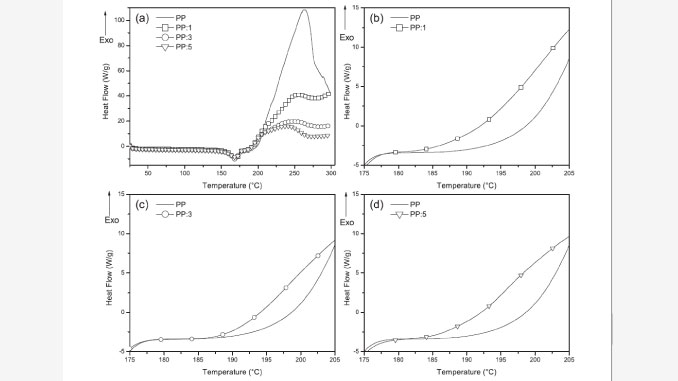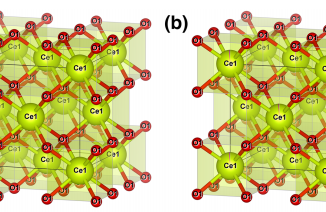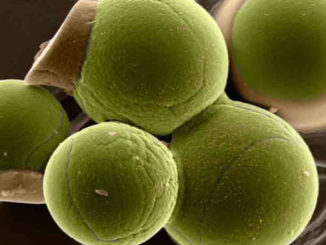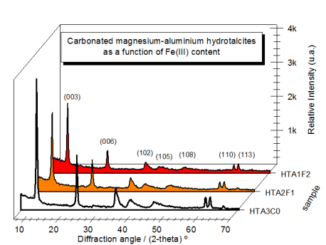
Writers: Lays B. Fitaroni, Juliana A. de Lima, Sandra A. Cruz, Walter R. Waldman
Keywords: Thermal analysis; Degradation; Polypropylene; Montmorillonite clay
Abstract: The development of nanocomposite materials with polymeric matrices, especially those using layered silicates, provides an alternative to composites with conventional fillers. One of the controversial aspects in the scientific literature about polypropylene-montmorillonite nanocomposites (PP/OMMT) regards its thermal stability compared to the PP matrix. The aim of this work is to evaluate the influence of the presence of montmorillonite clay in the degradation of composites, showing the limitations of thermogravimetric analysis (TGA) and emphasizing the importance of complementary analyzes such as differential scanning calorimetry (DSC) and oxidation induction time (OIT). The TGA results showed that the higher the organoclay content, the higher the temperature at which the release of volatiles takes place. However, the OIT results indicated a lower temperature for the onset of exothermic reactions for these materials and consequently the stability of the material is reduced. The use of DSC method simulating conditions of TGA, called oxidation induction temperature or dynamic OIT, was used to evaluate the stability of the composites explaining the divergence between the TGA and OIT results. The thermal analysis results were correlated to organoclay morphology, as evaluated by WAXS. It was concluded that the clay contributed to the beginning of exothermic oxidation reactions and to the kinetics decrease of volatile release and its formation.




